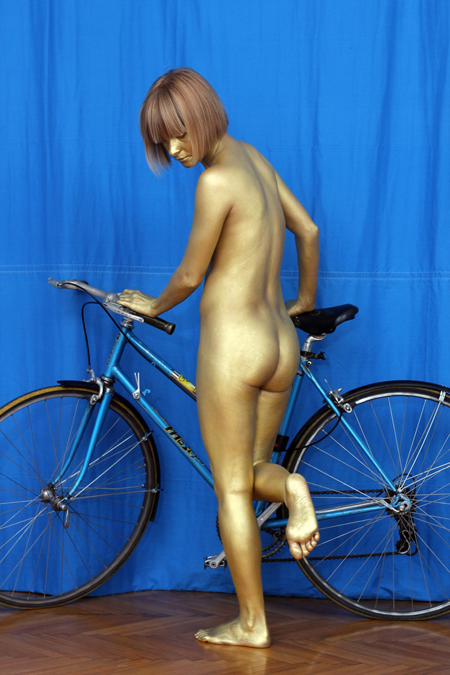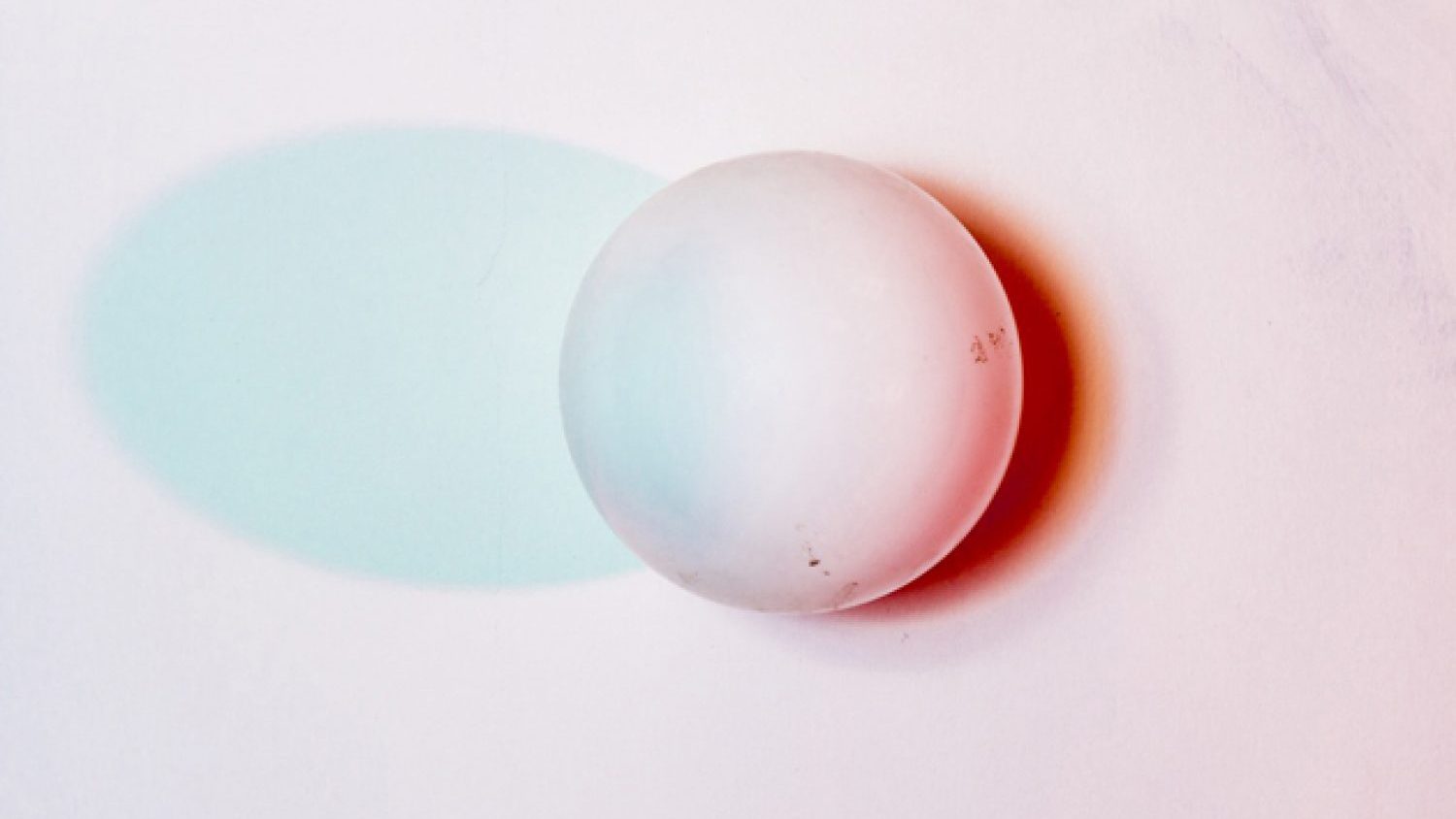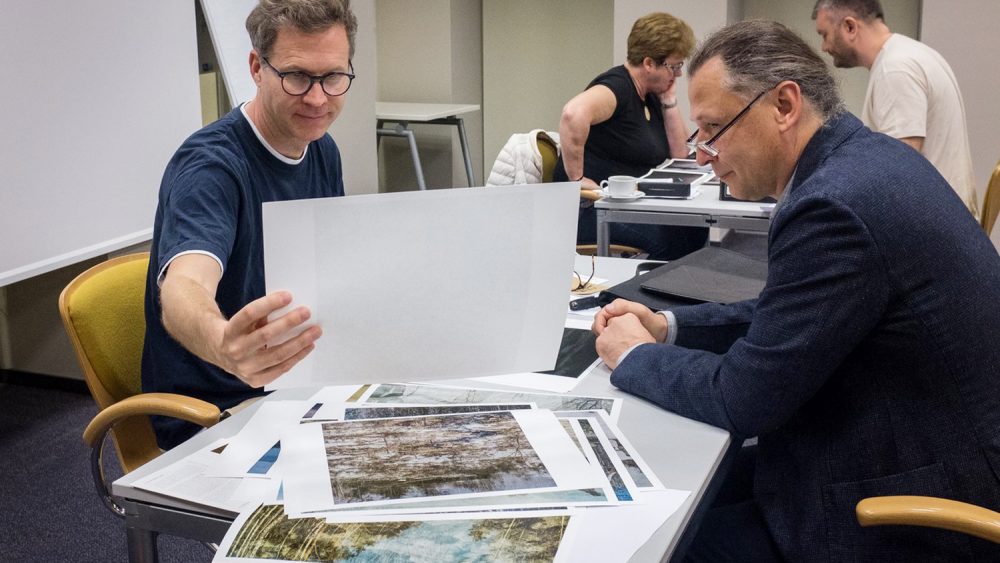FK asks – What has been the most valuable mistake?
FK continues the question series to Latvian and East European photographers to find out how they tackle their daily challenges. This time we ask what has been the most valuable mistake.
Rafal Milach:
I have shown the work I didn’t want to show. Don’t do it.
Jana Romanova:
I think the biggest mistake I ever made is actually the lack of self-confidence. Several times I have faced very rude comments about my work from the industry professionals telling me that nobody is interested in my work and that I have to find a better job. Several years ago such a comment could make me feel depressed for a long time. But, of course, when you grow older and become more experienced, you realize that the only way to work is to believe in yourself, work hard and be really passionate about what you do.
Alnis Stakle:
I don’t perceive auteur photography as a career, and I cannot identify mistakes from the past with permanent consequences. Very often exhibitions in very recognizable places such as art centre BOZAR in Brussels or Modern Art Oxford do not introduce any radical corrections in an artist’s everyday life.

Synchrodogs:
We have had a lot of situations in life when bad luck appeared to be good luck. For instance, when we wanted to make a picture of fireworks at daytime in the mountains of America but the fireworks didn’t work and just exploded making a huge cloud in the middle of the desert land. We loved the feeling of a real cloud in the middle of nowhere we accidentally created, the picture was exhibited at our solo show in Dallas Contemporary Museum in September 2015.
Birgit Püve:
Leaving the window open… It’s not so much about the creative process than its behavioural. At the very beginning when I started photographing I went out one summer night and left my window open at home (I lived on the first floor and had bought my first digital camera two weeks before, besides two mechanical ones). When I got home the curtain was fluttering oddly nearly outside and the night-lamp was covered with pillow, everything was messy… and all my three cameras were gone. Since then, I’ve been keeping control over my cameras like they were nuggets. And I never leave window open.
Ekaterina Anokhina:
For me the hardest thing is to allow myself to fail, because without a failure you can’t really learn from your mistakes or experiment boldly. I have failed many times – once I wasn’t accepted to a portfolio review in Moscow, but I went there as a translator and still made it a fruitful experience for me and met a lot of amazing artists.

Līga Spunde:
It seems, that I have learnt most from all kinds of underperformance – both of my own and of other people. Therefore, I am trying to invest maximum energy in my ideas. I am of the opinion that it is not worth starting [a project], if the intention is less than “excellent” from the very beginning. I suspect that art does not like, if you try to save yourself in the creative process. I recommend sleeping with your eyes open not to lose vigilance and not to miss opportunities.
Andrew Miksys:
After I self-published my first book, I doubted myself a little and thought I should take a more traditional approach to building a career – find a gallery and work with an established publisher on my next project. But trying to get the attention of the “gatekeepers” in the photo world proved to be a huge waste of time. The traditional way of making a career tends to be quite conservative and really only works for about 1% of artists. Once I got back to my DIY approach, making my own books, and building my own audience I felt much freer.
Viktorija Eksta:
I’m not sure, whether I can learn from mistakes.

Reinis Hofmanis:
It wasn’t a mistake, but rather an event that influenced me. When I was a student at the Art Academy of Latvia, I was studying photography at the Erasmus exchange programme in Hannover, Germany. Till then, I had been photographing for several years and I was confident that I was very good at it. In Hannover, for the first time in my life I received serious criticism from Professor Rolf Nobel, who said that my previous photography was completely useless. To prove the opposite, I worked very hard for the rest of that year, in order to break my paradigm from the visual to the substantive. I realised that photography can be not only visually enjoyable, but it can also contain a certain message or discuss some issues.
Sergiy Lebedynskyy:
I’m at the beginning of my career, so the mistakes and ground-breaking consequences are about to come.
Ieva Raudsepa:
I can’t think of one specific example, but I make mistakes all the time – both technical errors as well as conceptual failures. The good thing about it is that often you learn a lot more from mistakes than success.
Kārlis Bergs:
I photograph on the film. Those, who do the same, know that it is easy to make mistakes on the film; therefore, I can say that through mistakes I have learnt to be patient staring from the camera angle and ending with the development of the film.

Reinis Lismanis:
I want to say that I don’t feel like I have made big mistakes as an artist. Of course, I could blame myself for the professional choices such as school I attended or cities I lived, or why I didn’t try this or that. To my mind, it would be worthless, even degrading. Although I’m aware that I could do things differently, I am happy for my current situation, and I have reached this point thanks to the coincidences and choices I have made.
Katarzyna Majak:
My mistake is to naively believe that I will simply create art and famous curators, and rich collectors will simply queue to buy my work. That was not my case. Artists need to create but they also need to plan well and take good care of themselves. Thanks to overcoming this belief (by asking myself a simple question – do I really need to sell artwork to feel happy?), I turned my art into a social project, which accelerates personal growth and brings profit.
Anastasia Khoroshilova:
I tried to make a photograph of a person for one project, which was not that easy to communicate with. I was impatient and it was already a long day. I decided to stop photographing, and was angry about a long trip to that place and a non-productive result. When I looked through a very few contact sheets from that day I noticed, that everything, her pose, her facial expression, the background did not fit in the series I was working on. I worked on typologies, portraits, and therefore I was obsessed with making “similar images” as a concept for my project. Many months later I rediscovered these images. One image from that day became the central photograph of the project. You can see it in two museums and some private collections. But the most important point is, in my opinion, that sometimes it’s good to change the way of working and seeing things. (Even if you are very sure of it at the moment.)

Peter Puklus:
When I finished high school in 1999, I applied to the Visual Communication / Photography class at the Moholy-Nagy University of Art and Design in Budapest the same year, but I didn’t get accepted, mostly because I was not really prepared for the drawing exam (which was an important part of the entrance exams at that time). This was mostly my fault because I didn’t pay enough attention to drawing during my preparation process – so I had to wait another year. During this time I focused more on drawing, but had to make a living, too. I started to work in the bookbinding department in a large publishing house where I learned how books were made. After a few months, I got another job. I became a junior graphic designer in a small company, where I had to work mostly on flyers and menus for local restaurants. At this place I had the opportunity to learn Photoshop, Illustrator and InDesign and I worked on my first Apple computer; maybe you remember those first generation of soap-bubble style iMacs – I had a turquoise one.
Danila Tkachenko:
My most disappointing mistake was when I lost films that I shot for my Escape project. It happened before I processed them, so I had to go back and do all the shooting again (and the hermits whom I was photographing often live very far from civilization, so it was not easy). But I think that failures are essential and important for development. A failure also helps to concentrate on things you have to do. It is sad and difficult to overcome, but it is very fruitful in the long run.



